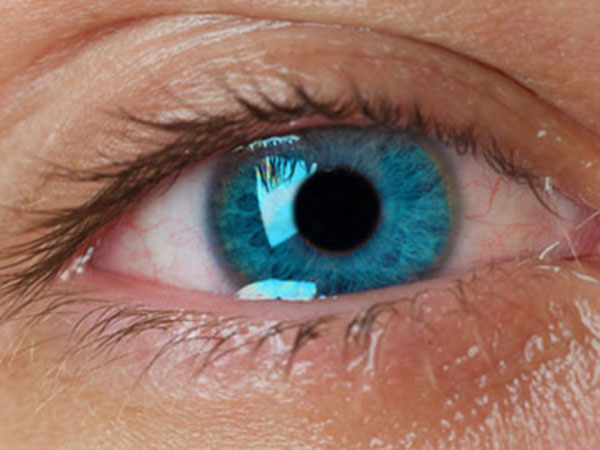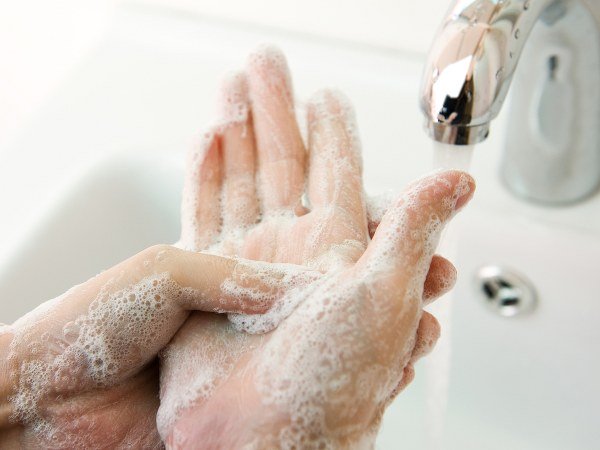Just In
- 2 hrs ago

- 3 hrs ago

- 6 hrs ago

- 6 hrs ago

Don't Miss
- Movies
 Vahbiz Dorabjee On Being Offered Mother Roles; Losing 10 Kgs & Stunning Transformation: I Was Impacting My…
Vahbiz Dorabjee On Being Offered Mother Roles; Losing 10 Kgs & Stunning Transformation: I Was Impacting My… - News
 Rs 4 Crore Cash Seizure Case: BJP Leader Nainar Nagendran To Appear Before TN Police On May 2
Rs 4 Crore Cash Seizure Case: BJP Leader Nainar Nagendran To Appear Before TN Police On May 2 - Finance
 Rs 7.50/Share Dividend: Adani Group Cement Company Reports Strong Q4 Results; Profit Surges 2x YoY
Rs 7.50/Share Dividend: Adani Group Cement Company Reports Strong Q4 Results; Profit Surges 2x YoY - Education
 Tamil Nadu SSLC Results 2024: Number of Ways you can check the Results
Tamil Nadu SSLC Results 2024: Number of Ways you can check the Results - Automobiles
 Bajaj To Offer Chetak Electric Scooter At Lower Price Point: All Details Here
Bajaj To Offer Chetak Electric Scooter At Lower Price Point: All Details Here - Sports
 Bangladesh vs Zimbabawe: Will Shakib Al Hasan Play Home T20 Series In May Or Not?
Bangladesh vs Zimbabawe: Will Shakib Al Hasan Play Home T20 Series In May Or Not? - Technology
 Qualcomm Reveals Snapdragon X Plus Chip for Laptops: 10 Core CPU, On-Device AI, & Much More
Qualcomm Reveals Snapdragon X Plus Chip for Laptops: 10 Core CPU, On-Device AI, & Much More - Travel
 Escape to Kalimpong, Gangtok, and Darjeeling with IRCTC's Tour Package; Check Itinerary
Escape to Kalimpong, Gangtok, and Darjeeling with IRCTC's Tour Package; Check Itinerary
Stye (Lump On The Eyelid): Causes, Symptoms, Risk Factors, Complication, Treatments And Prevention
A stye, also known as hordeolum is a small, red, tendered, pus-filled (not always) and swollen lump or pimple found on the outer and inner edge of the eyes, somewhere close to eyelashes or eyelids. It is a short-term bacterial infection of the eyes. A stye can occur to anyone, even if a person takes great care of their eyes.
A stye can be irritating, uncomfortable, painful or annoying, but normally not a serious condition. Sometimes, it goes away on its own and can be treated easily at home or by simple medications. It does not affect the vision and is non-contagious. Take a look at the details.

Causes Of A Stye
Several small glands are present in the eyelids known as meibomian glands. These glands secrete oil that acts as a lubricant for the eyes as well as protects the eyes' surfaces.
When something like dust, makeup or scar tissues block the passage of meibomian glands, they get clogged and results in swelling or inflammation, called a stye.
Another reason is infection due to Staphylococci bacteria. The bacteria are normally found on the skin, but sometimes, they grow in number in the area around the eyes and infect the follicles (eyelashes of eyes) causing swelling. The swelling clogs the oil-secretion glands and cause a stye.
A stye due to bacterial infection in the inner part of the eyes are considered more serious. This is because the pus in an internal stye cannot come out unlike a stye in the external part.

Symptoms Of A Stye
- Presence of a small, red, tendered and pus-filled lump (pimple)
- Inflamed eyelid
- Watery eye
- Sensitivity to light
- Slightly blurry vision
- Fever or chills (In the case of a internal stye)
- One or more lumps in either or both the eyes.

Risk Factors Of A Stye
Some of the risk factors of a stye include the following:
- Skin conditions like dermatitis or rosacea
- Pre-existing conditions like diabetes and high serum lipids
- A previous case of styes.
- Using expired makeups or sleeping with makeup on the eyes.
- Touching or rubbing eyes with dirty hands
- Dry eyes
- Improper use of contact lenses
- Burns or scar tissues
10 Tips On How To Prevent Digital Eye Strain While Working From Home
Complications Of A Stye
- Untreated stye can cause complications like the following:
- Foreign body sensation (feeling that something is in your eyes)
- Eyelid deformity
- Iid fistula (due to improper drainage)
- Corneal irritation
How A Stye Is Diagnosed
Diagnosing a stye is quite confusing as it is similar to other eye conditions like chalazion. A stye is mainly confirmed by physical examination.

Treatment Of A Stye
A stye may go on their own within a few days. However, if it is recurrent or have a large pus-filled area, it can be treated by the following methods:
- Antibiotic eye drops: To control the bacterial infection.
- Topic antibiotic creams: To be applied on the eyelid for infection control.
- Surgery: This method is applied in major cases of styes. The pus is cleaned by making a small cut. This helps prevent recurring styes and relieve swelling and pain.

How To Prevent A Stye
- Avoid touching hands with dirt or unwashed hands.
- Make a habit of removing makeup before sleeping. Avoid using expired eyeliners or mascara.
- Wash hands properly with handwash or soap before using contact lenses.
- Avoid rubbing eyes.
- If you have a condition like rosacea or dermatitis, treat them immediately.
- Avoid poking a stye. Use a warm compress to reduce swelling and pain or visit a medical expert.
Common FAQs
1. How do I get rid of a stye overnight?
A stye may take a few days to go. However, you can reduce the symptoms such as swelling, redness or pain by using a warm compress or antibiotic eye drops or creams. Never pop a stye. This may make them even worse.
2. Are eye styes caused by stress?
Stress can be one of the risk factors of a stye but not the only cause. Stress may obstruct meibomian glands (oil-secreting glands of the eyes that lubricate and prevents the eyes from infection), resulting in a stye.
3. How long does it take for a stye to go away?
A stye mainly go on their own within 3-5 days, if taken proper care. With antibiotic creams or drops, they may take around three days.
-
 wellnessHow To Get Rid Of A Stye: Safe And Effective Home Remedies
wellnessHow To Get Rid Of A Stye: Safe And Effective Home Remedies -
 nutritionWorld TB Day 2022: Foods To Consume And Avoid By Tuberculosis Patients
nutritionWorld TB Day 2022: Foods To Consume And Avoid By Tuberculosis Patients -
 disorders cureWhat Are The Common Diseases Caused By Bacteria In Humans?
disorders cureWhat Are The Common Diseases Caused By Bacteria In Humans? -
 disorders cureWhat Is Strep Throat? Causes, Symptoms, Complications, Treatments And Prevention
disorders cureWhat Is Strep Throat? Causes, Symptoms, Complications, Treatments And Prevention -
 healthGovernment Launches 'One Health' Consortium For Surveillance Of Bacterial, Viral Infections
healthGovernment Launches 'One Health' Consortium For Surveillance Of Bacterial, Viral Infections -
 wellnessWorld Milk Day 2021: Evidence-Based Health Benefits Of Donkey Milk
wellnessWorld Milk Day 2021: Evidence-Based Health Benefits Of Donkey Milk -
 wellnessWhat Is Walking Pneumonia? Is It A Serious Condition?
wellnessWhat Is Walking Pneumonia? Is It A Serious Condition? -
 disorders cureCapnocytophaga canimorsus Infection: Causes, Symptoms, Risk Factors And Treatment
disorders cureCapnocytophaga canimorsus Infection: Causes, Symptoms, Risk Factors And Treatment -
 disorders cure11 Best Home Remedies To Treat Cellulitis
disorders cure11 Best Home Remedies To Treat Cellulitis -
 disorders curePneumonia: Causes, Symptoms, Risk Factors, Diagnosis, Treatment And Prevention
disorders curePneumonia: Causes, Symptoms, Risk Factors, Diagnosis, Treatment And Prevention -
 disorders cureMeningitis: Types, Causes, Symptoms, Risk Factors, Complications, Prevention And Treatment
disorders cureMeningitis: Types, Causes, Symptoms, Risk Factors, Complications, Prevention And Treatment -
 disorders cureWhipple Disease: Causes, Symptoms, Diagnosis & Treatment
disorders cureWhipple Disease: Causes, Symptoms, Diagnosis & Treatment


 Click it and Unblock the Notifications
Click it and Unblock the Notifications




